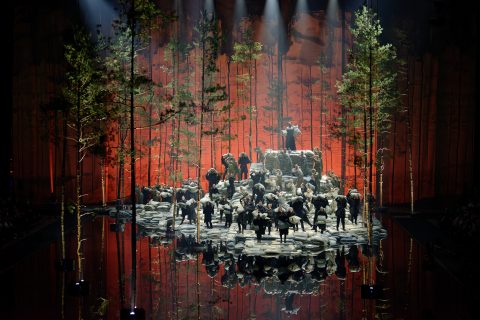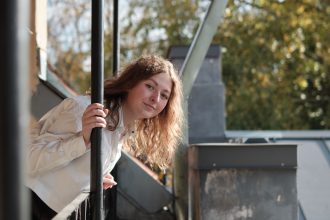The building on Laisvės Avenue that has been observed with some concern in the last few years finally has a vision for the future. Architect Inga Urbonaitė-Vadoklienė, the head of the public institution Idėjos miestui, presented a feasibility study of the building this summer, based on which it is recommended to establish a state-run architecture center here. There is a budget for it already but first we have the year 2022, during which the post office will serve as a space for the activities of Kaunas 2022.
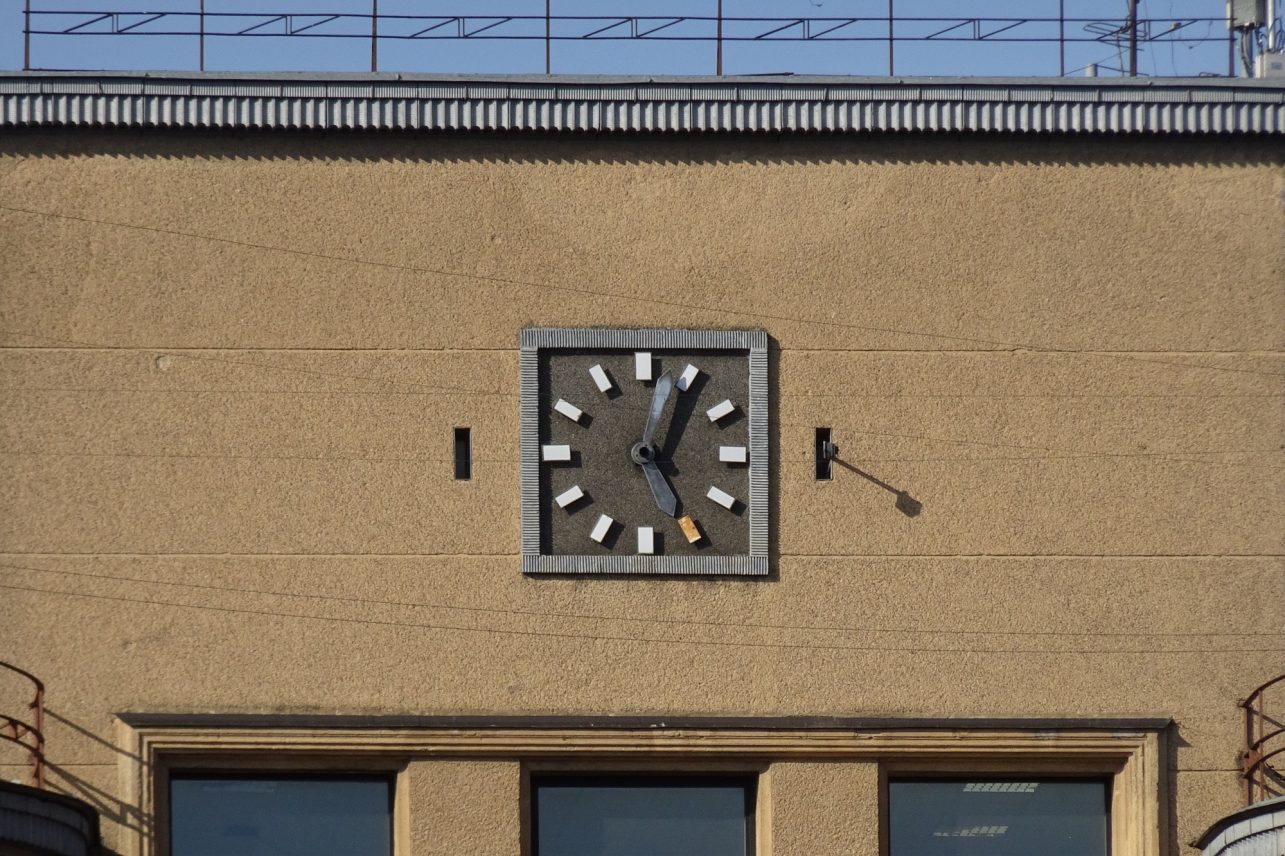
The main Modernism for the Future exhibition opened in the building designed by Feliksas Vizbaras on January 22. The exhibition is designed by Andrius Ropolas with colleagues from the Office De Architectura. Before the big day, I invited both to consider how a modern architect should treat something that already exists and belongs to each of us, including the architect.
What is your personal relationship with Kaunas Central Post Office?
Andrius: I grew up outside the city center, so I don’t have very strong connection to it. These were rare visits. Perhaps it was different for older residents of Kaunas because the post office was a more important institution in their time. Sending letters was less relevant to me. And I think that’s why it seems natural that the post office is closed, the building was emptied out and it requires a new function rather than resuscitation. During discussions, research, and the installation of exhibition, some people are saying that they either haven’t been in this building at all or a very long time ago. So, people pass by it, they know how great it looks, but the loss of importance of a function results in the absence of a more personal relationship.
Inga: I have another type of relationship with the building because I am not from Kaunas originally, so I would say that I started thinking more about this building when the debate started. I have the impression that it is extremely important to the townspeople. They care and worry about it. Curiously, the story of Kaunas Central Post Office affected other cities as well and stopped certain processes. I can even mention Lukiškės Prison. I had to take part in the process of changing its function; there was a fear of having the so-called “post office case” on our hands – people were afraid of a similar scandal. When preparing the feasibility study of the post office building, we emphasized its significance at that time, creating it as a representative object signifying a certain direction. It still works, only, as Andrius has mentioned, the roles are changing.
When I came to the post office for work, I immediately tried to see what was causing all this commotion. Yes, the building is vibrant, its spaces are comfortable, and they invite people to create, do something. It even allows me to grasp how our Lithuania, as we perceive it, was started; how it was created by our great minds and talents. All this is told – revealing the progressive approach – by architectural forms, spaces and details.
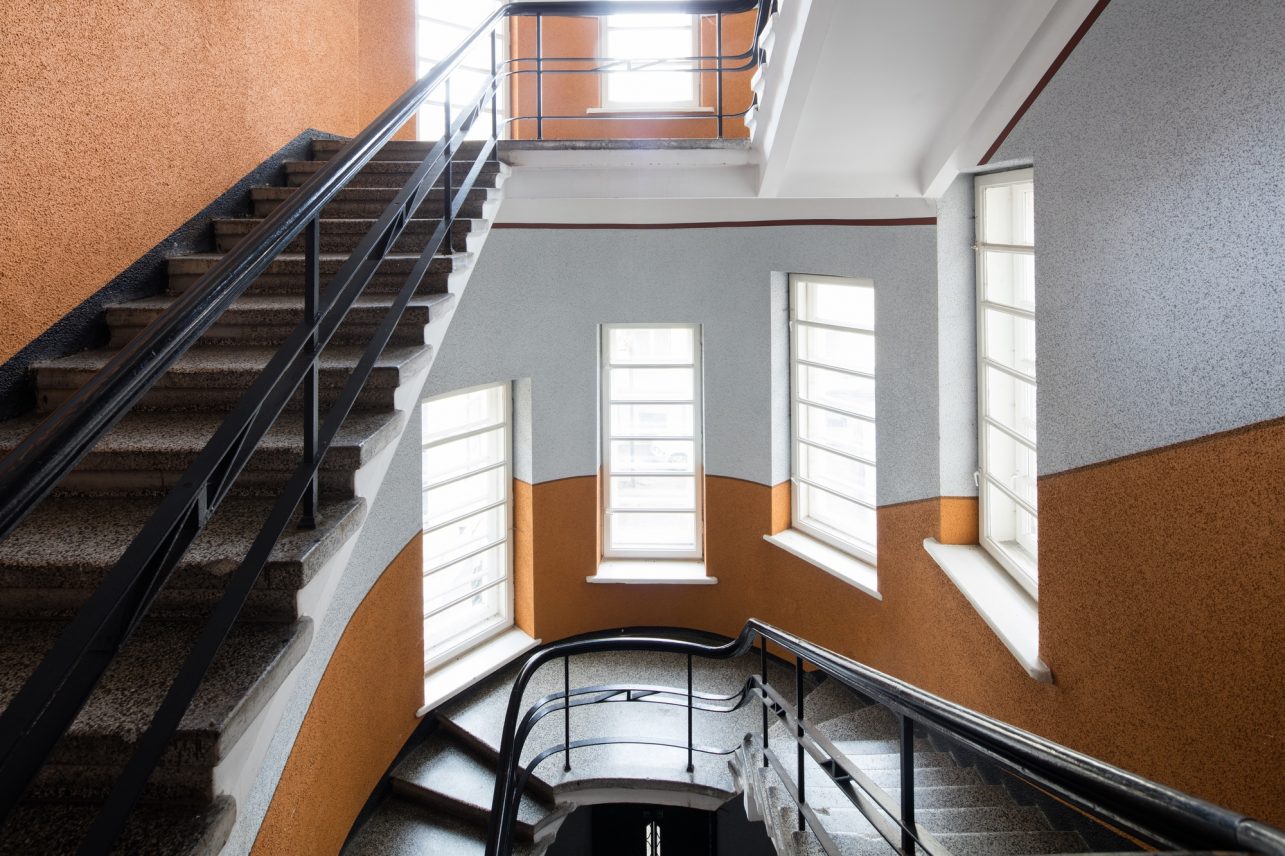
As for the personal relationship, I can tell you more about the post office of my native Klaipėda, which contains so much of the Prussian spirit. Although I didn’t live in the center, I often visited this post office because of the fabulous interior; the magic that I discovered there with each new visit, which made me look for reasons to visit again and again. Probably because of this I can understand the people of Kaunas who long for the post office and its rituals. After all, we are inert and do not like change.
What determines the success of a conversion?
Inga: In preparing the visions of Lukiškės Prison and post office buildings, we analyzed many examples. The management of such buildings with a specific typology and structure is usually taken over by the state, city or funds. It is dominated by multifunctionality and a variety of activities that are aimed primarily at the community, with a strong cultural emphasis everywhere. Of course, this code attracts people. I would say that we in Lithuania are moving very fast with conversions. Western European cities allow themselves to develop such objects at a much slower pace. In Barcelona, the prison was handed over to the public for over ten years just so it could be properly experienced. But I don’t think that we have a luxury of keeping such buildings empty.
I think if a conversion is accompanied by a discussion, it works. In other cases, when a historic building is converted into a private hotel, for example, the public does not feel the pulse and cannot experience how that place exists.
Andrius: Until a radical change takes place, until a function becomes obsolete until an accident occurs, everyone lives peacefully. It takes a tragedy to realize things. Paradoxically, the more it collapses, the more society gets involved. As for the post office, in particular, a lot has changed in its interior, so now we have much to discuss what is really worth preserving inside, what is heritage and what can be given up. Protecting everything is another example of an extreme.
Inga: In Kaliningrad, for example, the post office has been turned into a public bath.
Is that bad?
Andrius: I don’t think it’s the end of the world. I would look at it pragmatically. If there are two choices – empty space or a sauna because society needs nothing more – then it is really possible to look for a creative way to respond to people’s needs.
Inga: It seems to me that sometimes we deify objects too much, we put halos on them. Perhaps we should try to separate the artwork from its creator and try walking in their shoes. For example, what would Feliksas Vizbaras – a progressive architect of the Central Post Office – say? He was a rational man and would be more lenient on the conversion of his work, the abandonment of certain details required in its context. He would like for the building to be functional. It is not we who have to serve architecture, it is the architecture that has to serve us. This was the popular approach in Vizbaras’ era. Let’s not forget that; let’s not overburden the building with our own reflections and emotions because in this way we can get stuck for a long time.
Andrius: I like Inga’s approach. It corresponds to our design of this first exhibition in the post office. Inevitable changes are taking place inside. We are implementing them while taking into account the original ambition. There have been discussions with the representatives of the post office, for example, whether the carpets should be preserved. It sounds absurd, but different details raise different value questions. And we ask each time: what would the architect of the building think? What would he think of one or the other solution, if it would not damage the general image of the building?
When creating an exhibition for a building, we put on an invisible layer on it; a discussion about what should be protected in it and how people should deal with it in the future. Should we preserve and exhibit the Soviet “embellishments”? Ideally, everything should be restored to the way it was during the interwar period, but such objects also tell the stories of other epochs, so why not talk about it?
The Lithuanian system is not that flexible, we have little confidence, we are afraid to give the stage to brave and creative people.
What is easier and simpler for an architect? When the public doesn’t care that much, and it is enough for it to have something, no matter what it is, or when the residents – not just professionals – have long discussions and offer different opinions?
Inga: A simpler path doesn’t always mean better. I personally never fear the muddle of opinions and ideas. This is what I see as my mission, to help untangle the Gordian knots, to structure and purify thoughts. To move the birth of architecture into a public process that also requires foundations and load-bearing structures. I always repeat: an idea can be golden, but if you don’t have a vision for its implementation, it is worth nothing. So, this brings up a question: do we have enough ambition, will, determination, strength and resources to go all the way until we make a decision on how we want to implement the idea? People speak, get angry, criticize, and suggest, but often have no answer to the question on whether they would take it upon themselves to do so. They are more likely to delegate work. And the success stories of places like the prison or the post office depend a lot on personalities. Only people and strong personal and collective visions, as well as a skilled team, can give a makeover to any object even if it is somewhere in the middle of the forest. If the vision ends up on a bureaucrats table but they do not realize its depth, then it won’t go anywhere. This might mean that you need to have a simpler approach to the situation.
Andrius: It is best to work with professionals who are open to discussions about the unknown, who are OK with having ideological conversations, rather than those who perceive things literally. Conversion projects often defy legislation, which is drawn based on averages, often for new construction. Therefore, legal acrobatics are needed to deal with historic buildings. Even the functions of the areas where the objects are located have to be changed, which is certainly not easy. It is necessary to look at the processes creatively, I don’t mean emotionally, because such an approach is not always good either. And that is why we need professional personalities capable of manoeuvring between ideas and values.
Inga: When we talk about such objects, it is very important to remember who owns them. That owner is everyone. How do they all delegate something, trust someone to do it? The Lithuanian system is not that flexible, we have little confidence, we are afraid to give the stage to brave and creative people. I just read that Banksy wants to buy a prison in England and set up an art center there. I right away wondered how such an idea would be met in Lithuania. Imagine private individual planning to buy a public building to install a museum there. Sounds good, but when you start thinking about all the processes… In Lithuania, such an act would be equated with a conflict of interest or even corruption: how could you buy something like that without a tender? All the processes would get stuck. This has already happened. Of course, I am in favour of a fair process and by all means against secret agreements, but we have too many fears due to the mistakes of the past. We have many opportunities to be disappointed in business, to lose confidence in public tenders. So, there is a need for success stories that would allow us to believe in enthusiasm, ideas and unconventional approaches.
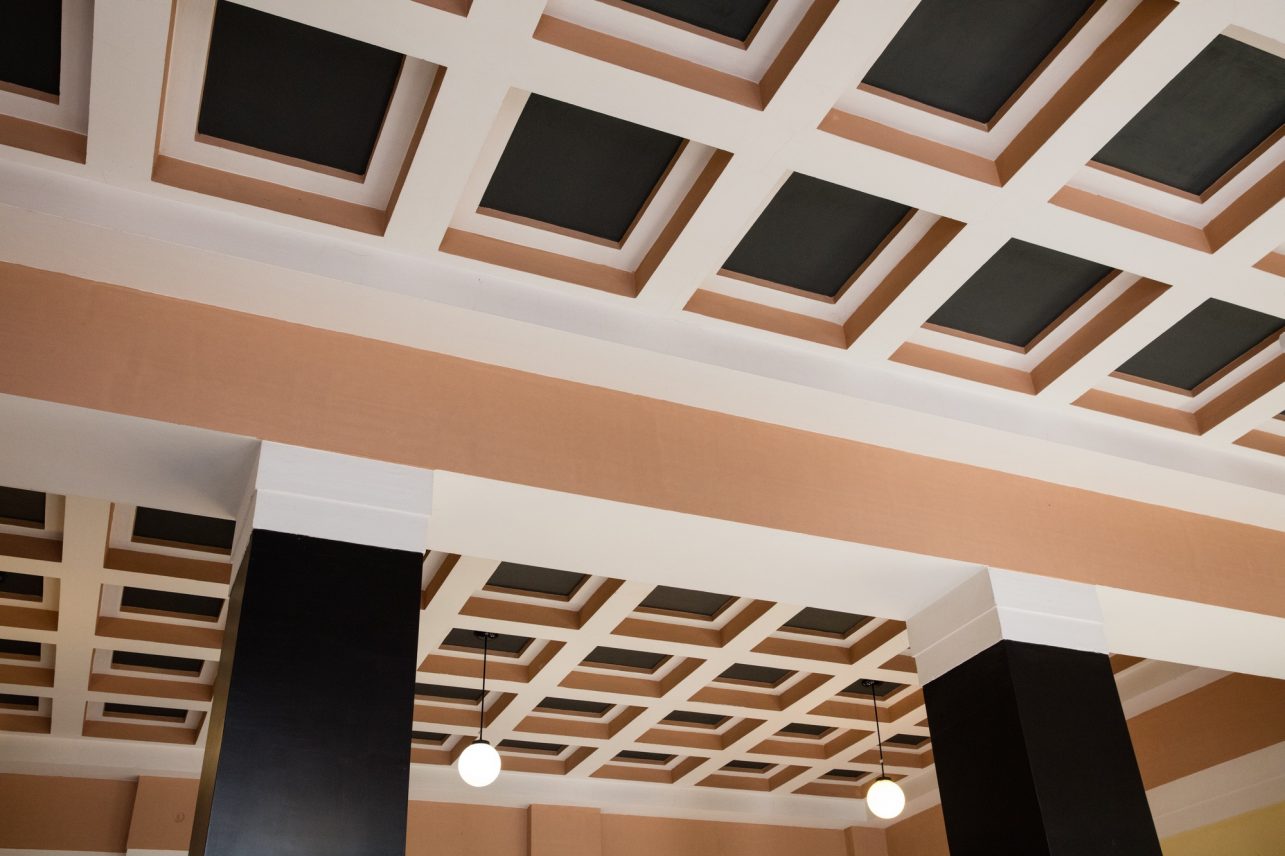
Is the year 2022 at the Central Post Office and all the events planned in it designed to test the building’s future visions? Maybe people who will read this interview will be able to come to one of the exhibitions or other events and express their opinion.
Andrius: Yes, there will be as many contacts with the building, as there will be exhibitions and events. I can’t speak for other artists, but MoFu 360/365 exhibition is also an experiment. And these solutions are not binding – you can fail, you can miss, so be it. We are sort of creating a particular direction; we want the postal operations hall to act as an exhibition space. We apply a different principle on the second floor. We are not sure that our solutions are the best, perhaps they won’t work. But how to better measure it than observing the visitors, their reactions and actions in real-time? Our exhibition will be followed by another one, the designers of which, will probably have a completely different approach. So, in a year we will see many different attempts to use these difficult spaces. It is very good that this is being done with works of art since we are thinking about a museum of architecture. I would say that it is a luxury to have a whole year for experiments.

